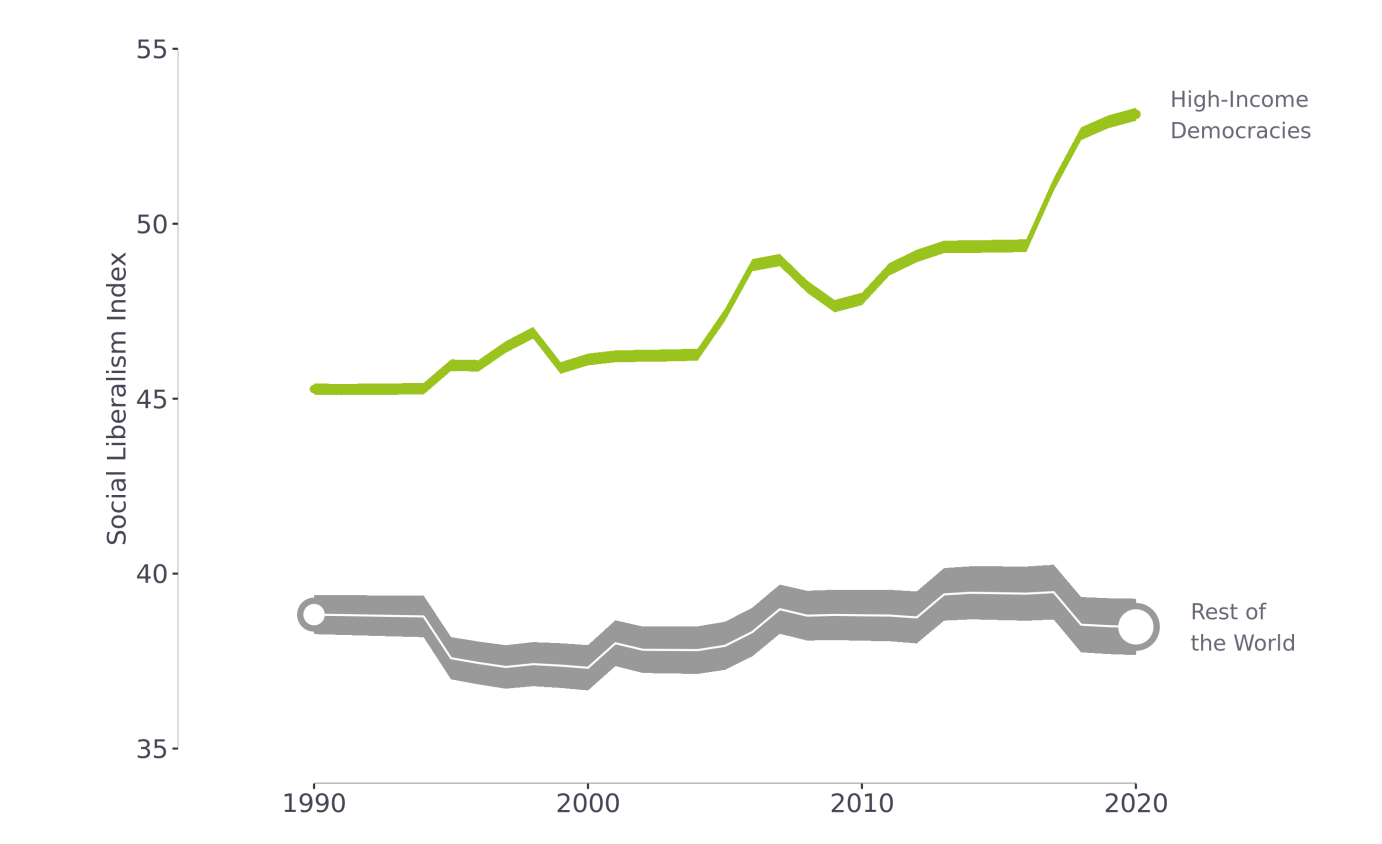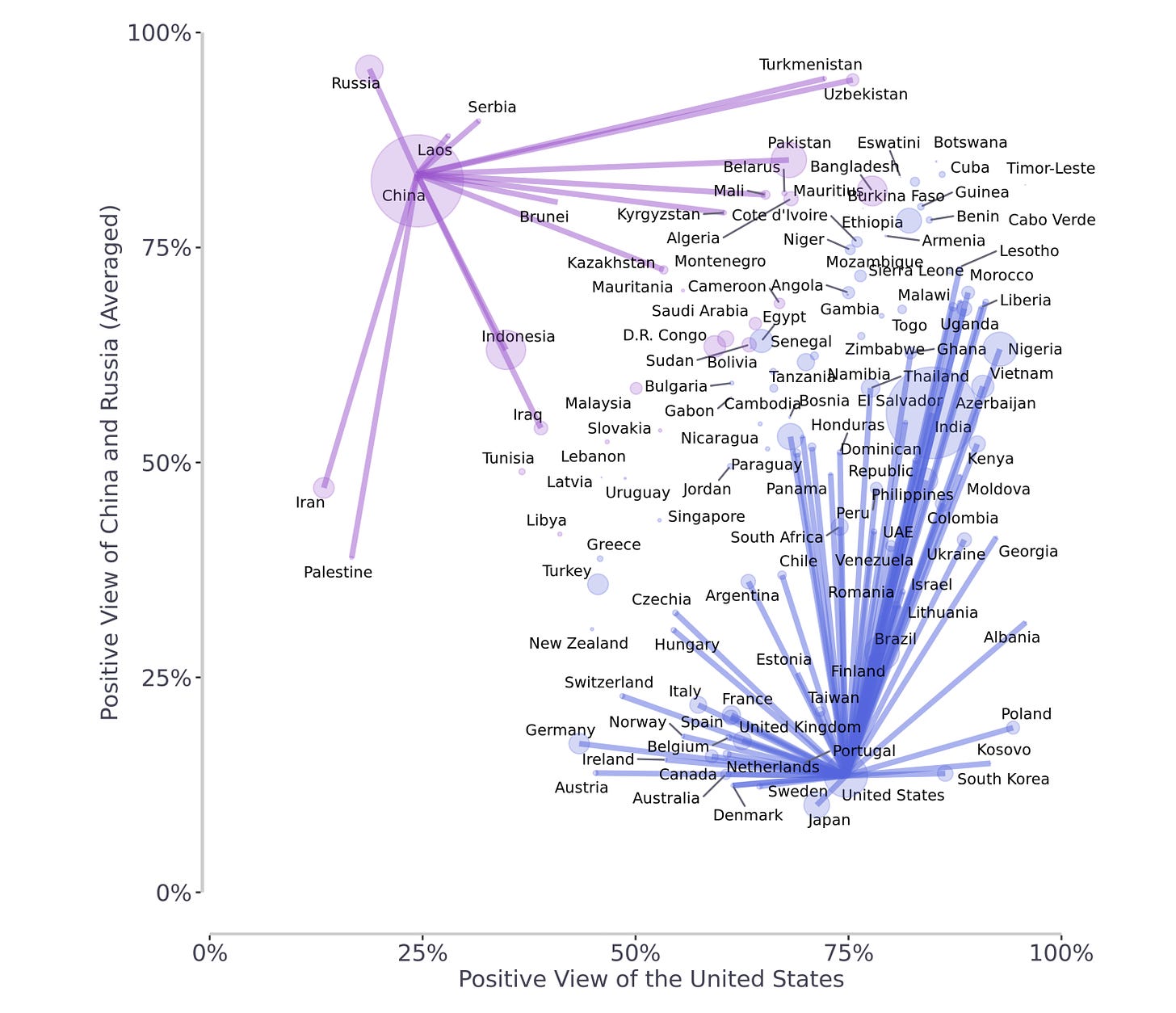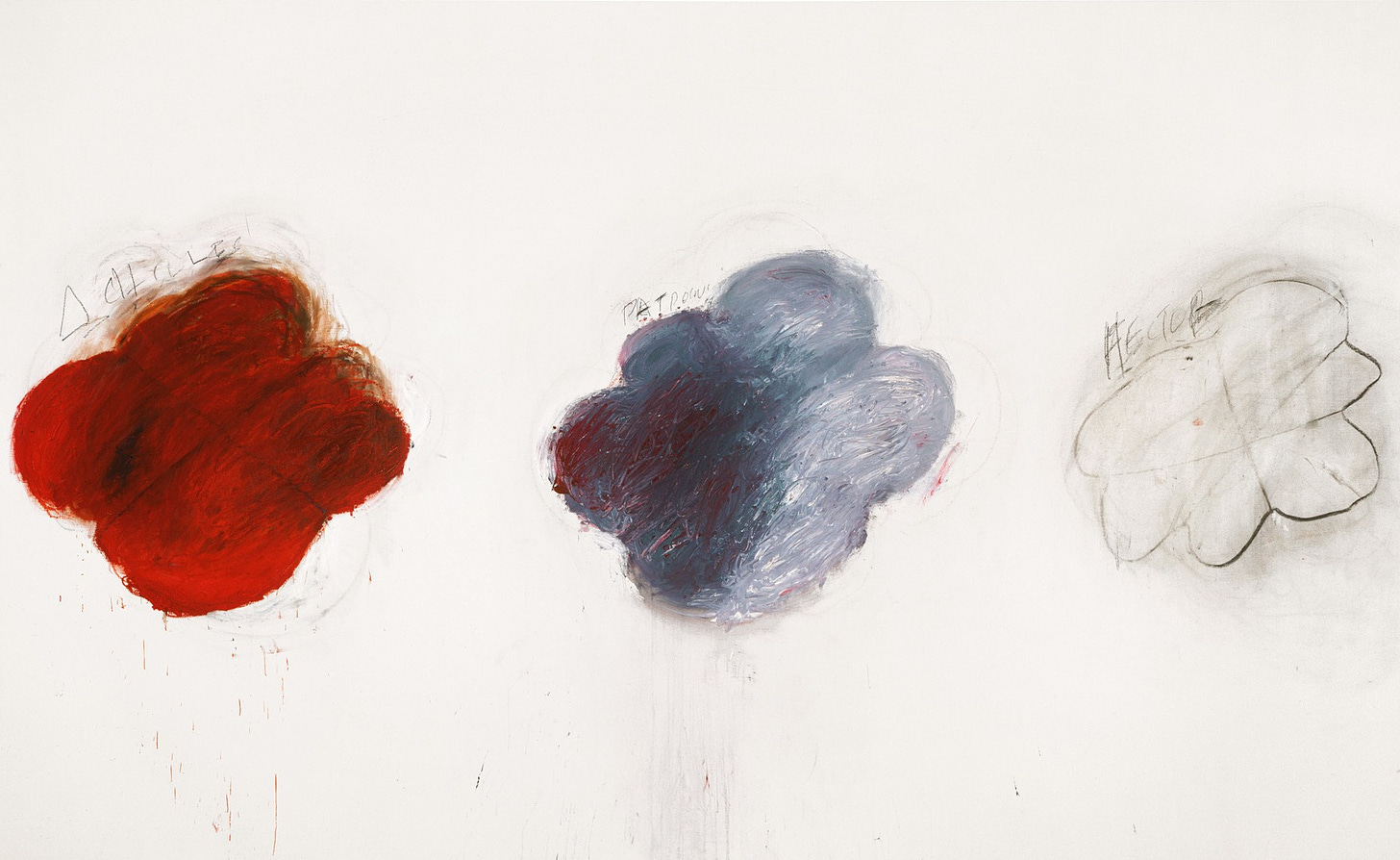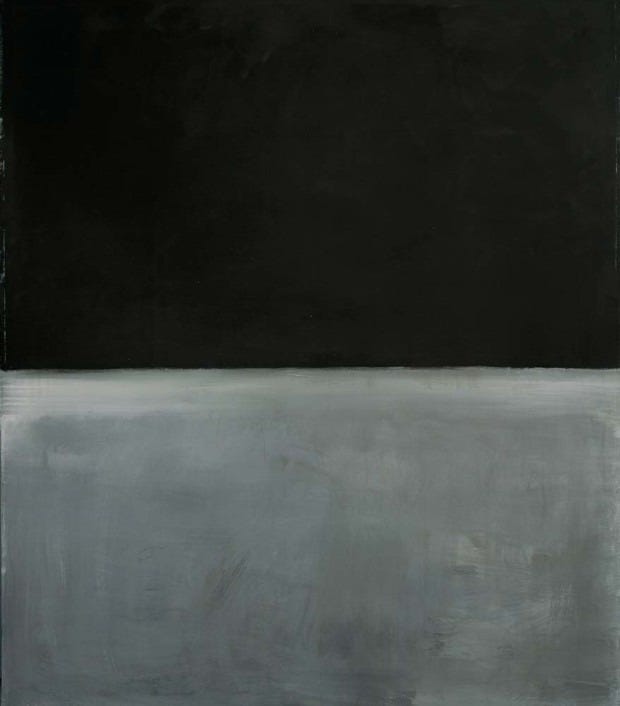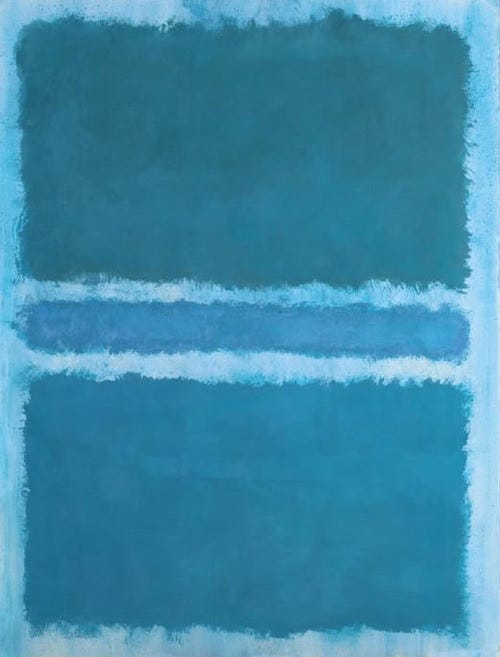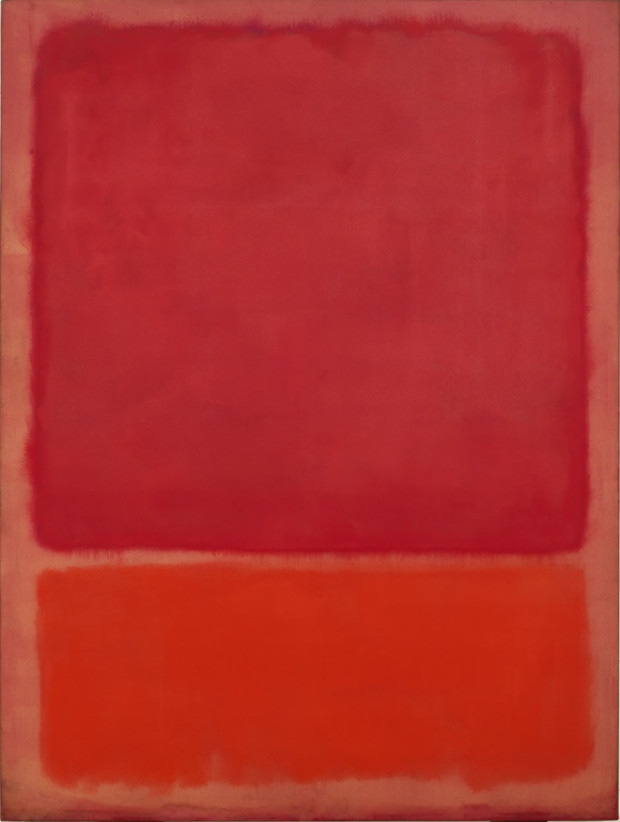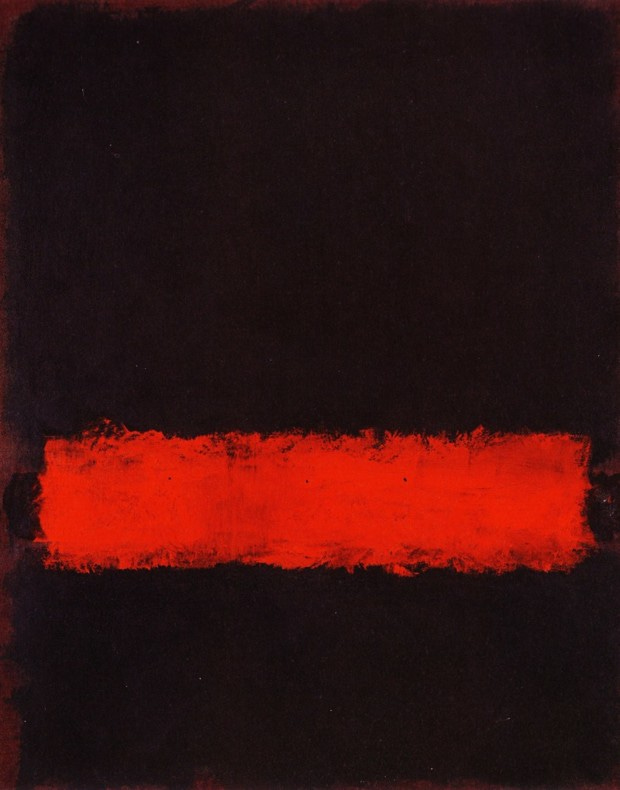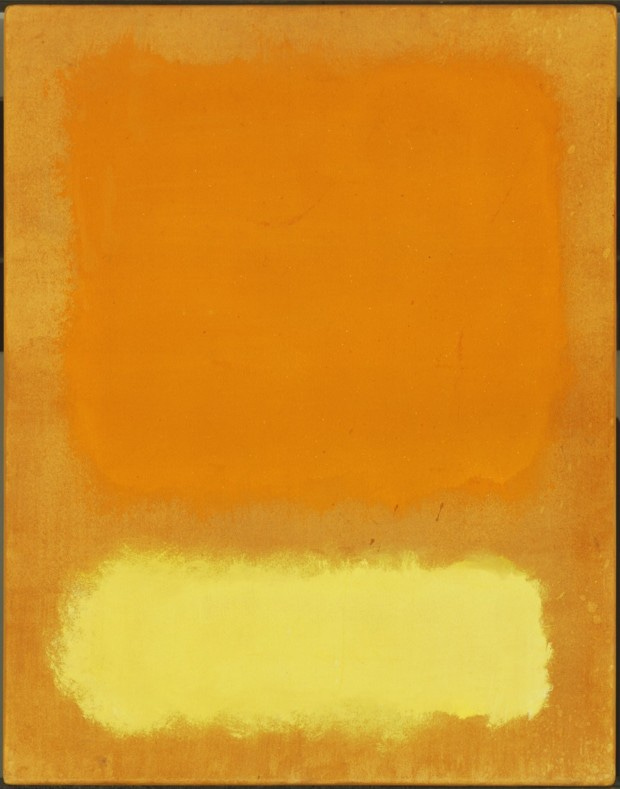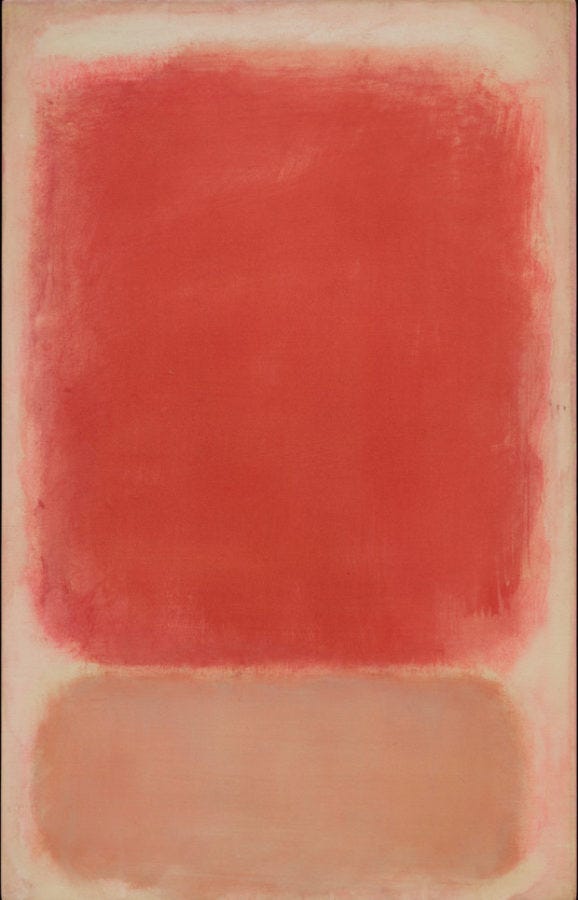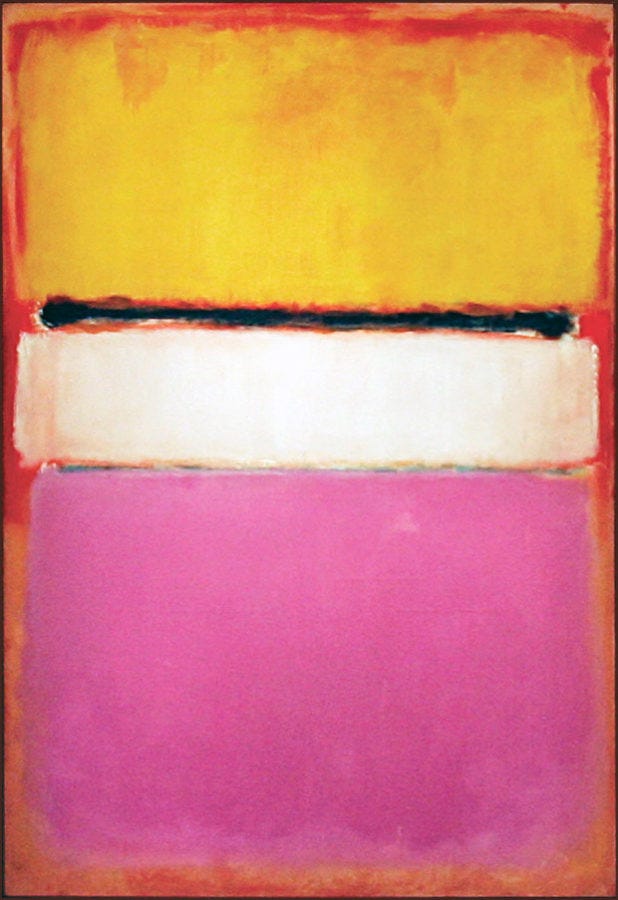On a Personal Note
Y’all, I will be back on the circuit from next week on. I will be touring Belgrade, Gummersbach, Berlin, Istanbul, and Sofia. Catch me if you can!
BTW, my initial plan to take some rest during summer kinda failed miserably because who would have known that preparing all those gigs in September comes at the huge cost that people just don’t respond to their E-Mails from mid-June on. I mean, lucky you, if you can do that. But also: Shame on you! Your brat summer did this to me:
A World Divided: Russia, China and the West
More on my claim that “The Great Realignment” is not only a domestic but a geopolitical phenomenon: The real divide in the world ain’t all about pragmatic Realpolitik as some might suggest; but it is also value-driven. For example, looking at the data, it seems in recent times the more progressive societies have become more supportive of the US/West while more socially conservative (often Muslim) societies in SE Asia, the Middle East, and Africa have become more pro-Russian. Of course, this is caused by a multitude of reasons; but maybe Huntington is wrong and underrated at the same time.
The world has divided into liberal and illiberal spheres. Among the 1.2bn people who inhabit the world’s liberal democracies, three-quarters (75%) now hold a negative view of China, and 87% a negative view of Russia. However, for the 6.3bn people who live in the rest of the world, the picture is reversed. In these societies, 70% feel positively towards China, and 66% positively towards Russia.
Perceived democratic shortcomings are associated with greater public receptivity towards authoritarian powers. A majority of the public is dissatisfied with democratic performance in 7 out of 10 (69% of) countries that are majority-favourable to Russia. Meanwhile, a majority feels positively towards China in three-quarters (73%) of countries that are majority-dissatisfied with how their democracy is performing.
China is now ahead in the developing world. For the first time ever, slightly more people in developing countries (62%) are favourable towards China than towards the United States (61%). This is especially so among the 4.6bn people living in countries supported by the Belt and Road Initiative, among whom almost two-thirds hold a positive view of China, compared to just a quarter (27%) in non-participating countries.
However, this boost in approval across the Global South has come at the cost of a dramatic collapse in support in developed nations. Whereas just five years ago, two in five (42%) western citizens held a positive view of China, today the figure is just half that amount (23%).
Russia too has lost its “fringe” support within western democracies. Over the course of the last decade, the proportion of western citizens with a positive view of Russia had already fallen from two in five (39%) to less than a quarter (23%) by the eve of the 2022 invasion of Ukraine – and now stands at just one in eight (12%). Russia has also lost any “leverage points” among formerly sympathetic European countries, including Greece (down from 69% to 30% favourable), Hungary (from 45% to 25%) and Italy (from 38% to 14%). In spite of Russian efforts at fostering disinformation and ties to extremist parties, the country enjoys little support from within western electorates.
However, the real terrain of Russia’s international influence lies outside of the West. 75% of respondents in South Asia, 68% in Francophone Africa, 62% in Southeast Asia continue to view the country positively in spite of the events of this year.
How a ‘Counter-Strike’ Tournament Became a Phenomenon in Cologne
Last week, I missed the newsletter because I was watching an amazing final in the “Cathedral of Counter-Strike” aka the LANXESS Arena in Cologne. And as usual, when I post from such events, I receive some cheeky comments from those who find it amusing (read: lame) that people gather in arenas to watch people playing a video game. Well, the joke is on you, blud. Because as somebody who watched a fair amount of competitive sports live (Bundesliga, Premier League, NBA, Ice Hockey, etc.), I can tell you that watching CS live is the real deal. The main reason is that it is a celebration of the game and the community—and not just of one team or nation. Don’t get me wrong, it’s not happy-clappy. The stadium usually has a clear favorite; but there is an appreciation for good gameplay. In other words, the vibes are just different. And tbh, it makes football culture look pretty dumb and primitive tbh.
Here is some mainstream press coverage that puts the event a bit into context. In case you want to get an actual glimpse of the atmosphere in the stadium or the sick gameplay that was on display there, you can also check out the hype video.
Lastly, huge s/o to Andy & Petra who made this year’s premium tickets possible <3
With a click of the mouse, the race against time begins. The crowd of spectators falls mostly silent, eyes trained on the colossal screen suspended above. As a rhythmic beeping ramps up through the arena, so does everyone’s pulse. One by one, players drop to the controlled boom of tactical teamplay. You could nearly hear a pin drop if it weren’t for the bassy voices of the commentators giving the play-by-play. A frenetic showdown in a cobblestoned alley leaves a last man standing, but they’re not in the clear; time is running out. The beeping’s crescendo foreshadows a lost round that never comes. Instead, a mic clips and the digital voice announces, “Counter-terrorists win.” Thousands of people stand in uproar, before settling once more to watch yet another round of gameplay.
This is the experience of seeing professional Counter-Strike live and it’s unlike anything else. Equal parts action movie and Super Bowl, many consider it to be the pinnacle of esports. Given its perennial dominance over the scene for 25 years, it’s hard to argue otherwise.
But not all Counter-Strike esports experiences are the same, and there’s only one place to see it in its most maximalist form: Cologne, Germany. […]
It’s also called “The Cathedral of Counter-Strike.”
A fittingly grandiose name for a gaming tournament that drives thousands of attendees from across the globe to Cologne, it also applies to the city itself, as well as the LANXESS arena which the event has mostly been held since 2015. Together, they embody the cathedral as a place where players and fans alike come together to worship at the altar of Counter-Strike.
[…]
The following year [2014[, ESL One Cologne hosted its second of the three consecutive Major tournaments, this time setting up roots at the LANXESS arena — historically known as the home of Cologne’s hockey team the Kölner Haie — with a fan capacity of 18,500. Alongside 2014’s event in Katowice, ESL One Cologne’s sheer scope and pageantry in a stadium like LANXESS helped elevate the profile of the competitive scene. In a 2023 interview with The Esports Insider, ESL co-founder Ralf Reichert reflected on the impact of the 2014 event as a flashpoint for the industry.
“In the early days, [we] would go regularly to concerts in LANXESS arena,” he says. “Did we think and joke like, ‘Yeah, one day we’re going to do a tournament here?’ Yes. Did we really plan for it? Probably not, to be honest. But it was a good joke back then. [With the LANXESS arena] a lot of what’s esports these days was decided at that time. It became tangible.”
Following the foundation laid at the LANXESS arena, all the pieces were in place for the next ten years of ESL and Counter-Strike. Each yearly pilgrimage to the home of Counter-Strike has been no less special than the one before.
[…]
In Cologne, the players enter through the crowd, large plumes of smoke billow from the stage when the bomb detonates in-game, and the event ends with all the greatest hits from traditional sports championship celebrations: an iconic trophy lift, confetti falling, camera lens autographs, and immediate on-stage interviews rife with emotion. Every long-time Counter-Strike fan watching the event already knows how important Cologne is on the calendar, but by the time the event is over, so does everyone else.
Attending a Counter-Strike tournament can feel like a religious experience. Thousands of people make the journey to places like Cologne for the event, enraptured in unison during the sermon of 24 rounds. There are heroes to cheer and idols to revere. But most importantly, there’s an energy shared between the crowd and the players on stage that flows throughout the stadium, making the dynamic of esports fandom concrete.
In 2018, ESL added to the mythos by dubbing Cologne the “Cathedral of Counter-Strike,” a name originating from attendees and befitting the cultural center of the esport’s scene.
[…]
“It’s a magical moment,” he says. “You think back where we were and where it started in the basements of hotel ballrooms [to] where it is. You just have to remember a little bit, these snapshots of time that could blur together. [You] take it a little bit for granted. There definitely are these moments [that] really make you appreciate what this journey’s been, how hard it’s been, what so many people have sacrificed along the way. These are the moments where you start to realize how special of an opportunity we’re all afforded.”
Engagement with art and meaning in life: the predictive roles of awe, interest, supernatural attributions
As I always say: Sundays are for the Lord & art. This study shows why. I hope you included some proper coffee, prayers, a walk in nature, and a museum visit in your routine today! (h/t to Salpi for the pointer)
BTW, I now kinda feel bad not for all those of you who disliked the somewhat infamous Cy Twombly painting that I take as a proxy for aesthetic intuitions #iykyk. There is a way out of meaningless existence, you know. (And being subscribed to this newsletter is a good first step lol)
Abstract
Drawing from Aesthetic Cognitivism, the position that art can lead to meaningful understandings, we predicted that people with more interest in art, experiences of awe around art, and supernatural attributions for art experiences would have higher levels of meaning in life. In Study 1, we tested these hypotheses in three samples (n = 100 in each sample) with varying art expertise. Results showed the strongest support for hypotheses in samples with varying levels of art training. In Study 2, in an online sample with wide variation in art training (N = 1,862), we found strong support for hypotheses. In both studies, multiple regressions including covariates (aesthetic fluency, religious belief salience) showed unique associations mainly for awe around art. Overall, our results were consistent with Aesthetic Cognitivism, providing a rare empirical test of this theory, and pointed to psychological experiences with art as potentially relevant to life meaning.
The 376 Most-Cited Contemporary Authors in the Stanford Encyclopedia of Philosophy
This is a fascinating list. A couple of observations:
Analytic philosophy is still biased toward metaphysics (no matter how obscure), logic, philosophy of mind, and even philosophy of language. This will explain the insanely high ratings of philosophers with rather low overall cultural impact. I don’t want to name names but the TOP20 already contains quite some not-so-canonical names IMHO.
Bernard Williams & Martha Nussbaum are well ahead of Derek Parfit. Peter Singer, the most influential ethicist of our time, not even TOP50. I wouldn’t necessarily disagree.
Karl Popper behind some names that even Philosophy PhDs might not know x.x
Judith Butler on the same rank as Michael Huemer. As much as I enjoy this result, it is just a testament to how much analytic philosophy is detached from mainstream philosophical discourse…
Gaus & Scruton—two political philosophers with some of the most holistic works: bottom of the ranking. Go figure.
Not much to say about Isaiah Berlin…as the rest of analytic philosophy, it seems :(
Lots of interesting stuff going on here. Check out the whole list!
This list generates a rough measure of current influence in what I call "mainstream Anglophone philosophy" […]. For example, the top five -- Lewis, Quine, Putnam, Rawls, and Kripke -- are the same (in a different order) as the top five in Brian Leiter's poll results concerning the best Anglophone philosophers since 1957. Better-known bibliographic metrics, like Google Scholar and Web of Science do not as accurately measure this particular sociological phenomenon.
The list captures, if anything, a moment in one particular academic philosophical culture. For example, despite Michel Foucault's huge global academic influence, mainstream Anglophone philosophers rarely cite him, and on this list he ranks #187.
1. Lewis, David K. (cited in 307 different main entries)
2. Quine, Willard van Orman (213)
3. Putnam, Hilary (190)
4. Rawls, John (168)
5. Kripke, Saul A. (159)
6. Williamson, Timothy (152)
7. Davidson, Donald (151)
8. Williams, Bernard (146)
9. Nussbaum, Martha C. (140)
10. Nagel, Thomas (137)[…]
11. Nozick, Robert (135)
[…]
19. Parfit, Derek (112)
[…]
24. Pettit, Philip (109)
[…]
29. Scanlon, Thomas M. (101)
[…]
34. Popper, Karl R. (94)
[…]
37. Raz, Joseph (89)
[…]
40. Anderson, Elizabeth S. (83)
[…]
63. Singer, Peter (71)
[…]
91. MacIntyre, Alasdair (65)
[…]
98. Taylor, Charles (63)
[…]
103. Habermas, Jürgen (62)
[…]
173. Sandel, Michael J. (46)
[…]
187. Cohen, Gerald A. (44)
187. Foucault, Michel (44)[…]
223. Butler, Judith (40)
223. Huemer, Michael (40)[…]
335. Berlin, Isaiah (31)
[…]
357. Gaus, Gerald F. (30)
357. Scruton, Roger (30)
Mark Rothko’s Recipe for a Work of Art
Rothko is easily among my TOP5 favorite painters. But he hasn’t always been. It needed a trip to the Tate Modern in London with my good friend Philipp to get Rothko—and even then it took some time, discussion, and reflection.
Even now (after having seen dozens of Rothkos in person, in many different places, over many years), it is sometimes hard to articulate what makes Rothko so appealing. Maybe his own words do it the best…
Mark Rothko, one of the most renowned American artists of the postwar era, is widely recognized as an Abstract Expressionist, and his artwork is truly captivating. Those fortunate enough to have experienced Rothko’s pieces in person often find themselves immediately enchanted by his abstract color fields. Within these canvases, one can discern a multitude of emotions and interpretations, including themes of mortality, devotion, and hope. Some even claim to perceive reflections of their own inner selves in his work.
In November 1958, Mark Rothko delivered a lecture at the Pratt Institute in which he contemplated art as a craft and shared insights into “the recipe of a work of art – its ingredients – how to make it – the formula.” Here it is:
There must be a clear preoccupation with death—intimations of mortality ... Tragic art, romantic art, etc., deals with the knowledge of death.
Sensuality. Our basis of being concrete about the world. It is a lustful relationship to things that exist.
Tension. Either conflict or curbed desire.
Irony, This is a modern ingredient—the self-effacement and examination by which a man for an instant can go on to something else.
Wit and play ... for the human element.
The ephemeral and chance ... for the human element.
Hope. 10% to make the tragic concept more endurable.
Peace,
SG




